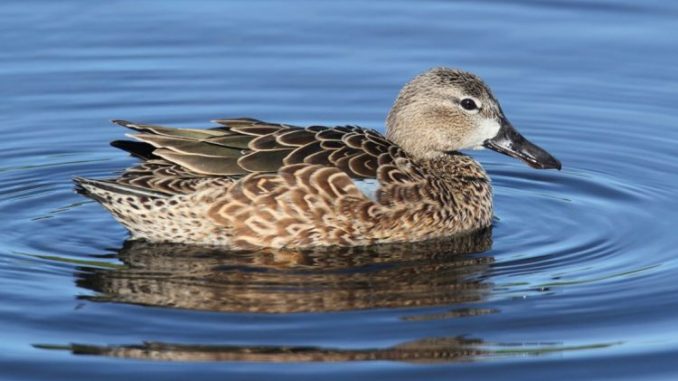
Includes fewest birds ever reported in Southeast Louisiana this month, Reynolds said
A combination of wetter habitat in the north, no early fronts as of yet and high water levels in Louisiana’s coastal marshes because of recent flooding have conspired to produce one of the poorest aerial teal counts recorded, according to the state’s waterfowl study leader.
Larry Reynolds wrapped up a week’s worth of flights today and submitted the September 2016 Aerial Waterfowl Survey, with an estimate of only 97,500 blue-wings in the state — the second-lowest total ever.
By comparison, an incomplete survey last year indicated 247,500 birds had arrived by the second week of September. Only the September 2013 estimate of 50,000 birds is lower.
The most recent five-year average is 145,000, and the long term average is 236,000 blue-wings.
The numbers for Southeast Louisiana were even more troubling: about 500 teal were detected at only two locations on all survey transects.
The distribution was similarly poor in Southwest Louisiana, but two big concentrations in agricultural fields north of White Lake near Gueydan bumped up that total to 95,000 birds.
The official report isn’t yet posted on the LDWF website, but here are Reynolds’ comments attached to the report:
The estimate of 97,500 blue-winged teal is far below the 247,500 estimated last September from an incomplete survey, and is the second lowest estimate on record for this September survey. Only the 50,000 estimated in September of 2013 was lower. This estimate is 33% below the most recent 5-year average of 145,000 and 59% below the long-term average of 236,000 bluewings for this survey. The estimate in SE Louisiana was the lowest on record by far. Small numbers of teal were observed in only 2 locations on all SE survey transects. Distribution was similarly poor in SW Louisiana, with nearly all bluewings counted in agricultural habitats and only 2 notable concentrations, both in fields north of White Lake near Gueydan . The 2,000 bluewings counted on Catahoula Lake was only slightly less than what was seen the last 3 years, but far below the 18,000 counted in 2012 and 49,000 in 2010. The estimate for mottled ducks is also the lowest on record for this survey and 57% below the most recent 5-year average of 28,000.
Habitat conditions are currently characterized by high water levels in coastal marshes and higher than average flooding in agricultural areas. Flooding from near-record August rainfall continues to overtop levees and roads in a few locations in SW Louisiana, but excessive flooding was evident in nearly all marsh habitats. Although less prevalent in SE Louisiana, higher than average water levels were noted in many locations. Submerged aquatic vegetation growth was evident in many locations in SE LA, but was less abundant in most areas compared to 2014 and 2015. It was difficult to assess habitat quality with such high water levels in SW Louisiana, but significant expansion of invasive aquatics was noted along some transects, especially water hyacinth in the marshes south of White Lake, and water hyacinth and salvinia in the marshes east of Lafitte. Water level at Catahoula Lake has been maintained relatively well this summer despite the challenges of heavy rainfall and runoff, and habitat conditions look fair to good.
Clearly, conditions have not been conducive to moving large number of bluewings into Louisiana. Compared to last year at this time, habitat conditions are much wetter in states to the north, and there have been no early fronts as of yet. At least in SW LA coastal marshes, high water levels are currently providing sub-optimal foraging opportunities, so it may be difficult to hold migrants in those habitats compared to shallow flooded fields and pastures of the agricultural regions.


